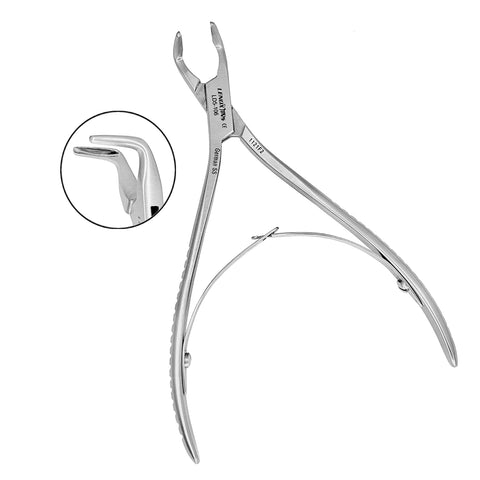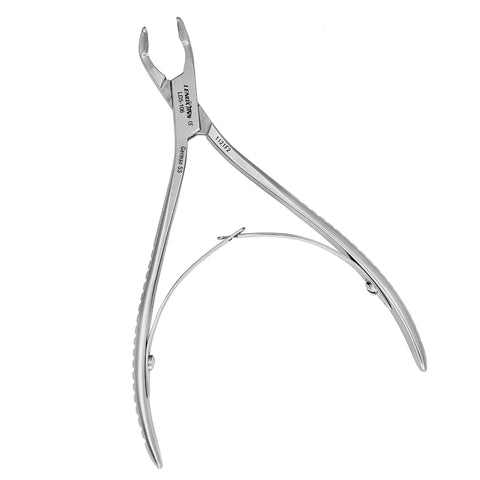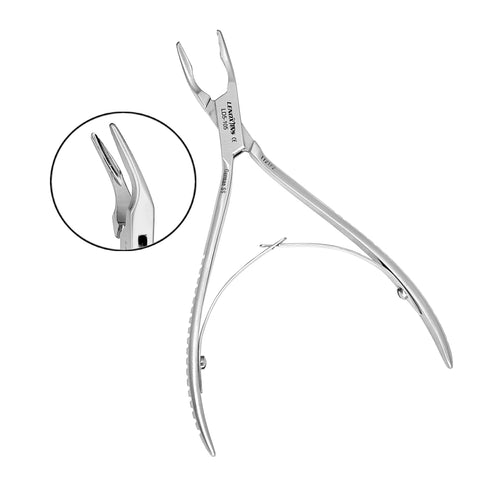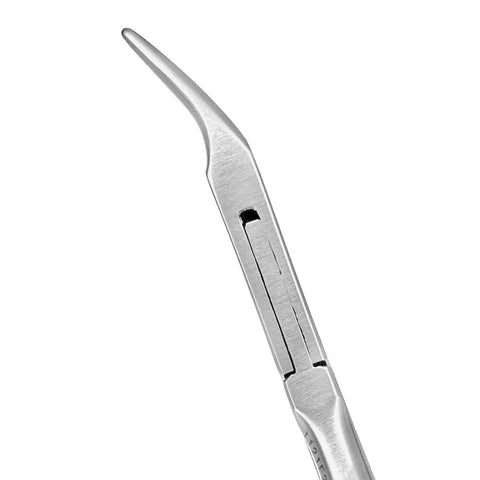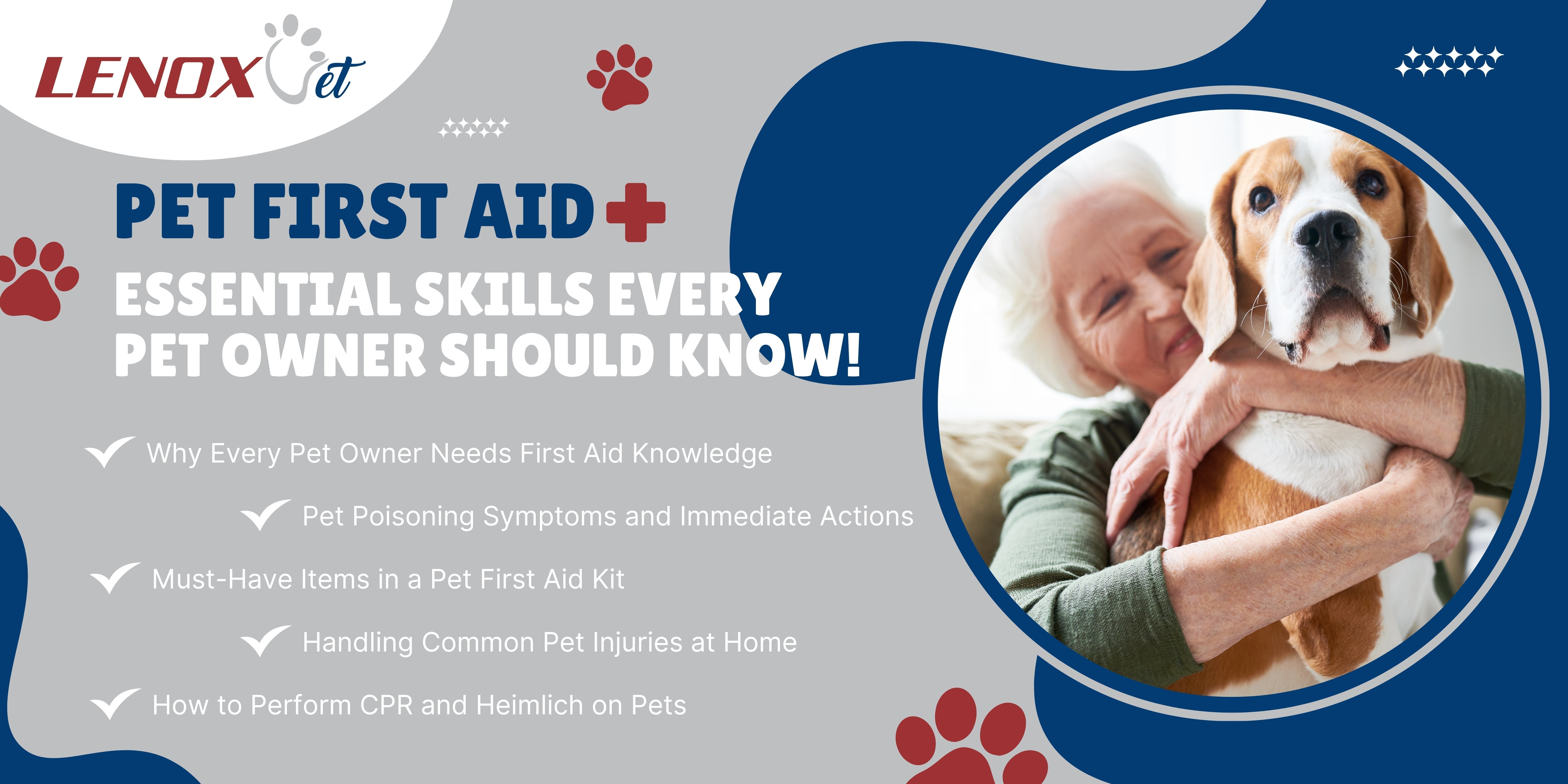
Pet First Aid: Essential Skills Every Pet Owner Should Know
Pets are treasured family members who rely on their owners for health, safety, and well‐being. Accidents and emergencies can occur at any time, and being prepared to handle these situations can mean the difference between life and death. Pet first aid involves a range of emergency interventions—from managing poisoning and cuts to performing CPR and basic wound care. This article explains why every pet owner needs first aid knowledge. For additional guidance, Read More Informative Articles on pet care can provide deeper insights into emergency preparedness. It also identifies common pet poisoning symptoms and necessary immediate actions, lists must-have items for a pet first aid kit, covers the handling of common pet injuries at home, and describes how to perform CPR and the Heimlich maneuver on pets. With current advances in toxicology and veterinary sciences, owners can now follow scientifically supported steps to address issues such as ingestion of household chemicals (bleach, detergent, hydrogen peroxide), toxic plants (azalea, sago palm), and dangerous foods (chocolate, xylitol-containing candy) that cause irritation, diarrhea, or poisoning. Utilizing Precision Vet Tools can enhance the accuracy and ease of administering these crucial interventions. Expert research by the American Veterinary Medical Association emphasizes that timely first aid not only stabilizes the pet’s condition but also minimizes further complications such as respiratory distress, cardiovascular pressure changes, and liver toxicity. As pet first aid covers topics from managing mild injuries to addressing severe toxic ingestion, this comprehensive guide aims to empower pet owners with the knowledge needed to protect their beloved companions.
Transitioning to the main content, the following sections will discuss critical aspects of pet first aid, providing practical tips, lists, evidence-based studies, and step-by-step instructions crucial in emergency prioritization.
Why Every Pet Owner Needs First Aid Knowledge
Pet first aid knowledge is indispensable because emergencies with pets occur suddenly, and immediate action can be life saving. The importance of acting fast in emergencies is underscored by studies in veterinary emergency medicine that show that early intervention significantly reduces the severity of symptoms such as respiratory distress, hypothermia, and toxic exposures. Knowing first aid empowers pet owners to handle minor injuries like cuts, burns, or insect bites at home and prevent complications until professional help arrives.
With pet poisoning on the rise due to accidental ingestion of toxic substances such as insecticides or household chemicals, first aid skills also encompass proper recognition of early poisoning symptoms and rapid initiation of appropriate countermeasures. For instance, research published in the Journal of Veterinary Emergency and Critical Care (Smith et al., 2020) illustrates that timely first aid measures – including decontamination and supportive care – reduced hospital stays by over 35% in poisoned pets. This study noted that many pet owners had a positive impact on recovery by initiating care at home even before the animal reached a veterinary clinic.
Common household hazards for pets include not only obvious toxic chemicals like bleach and antifreeze but also everyday items such as certain essential oils which can affect the pet’s central nervous system and even grapes or raisins that may lead to kidney failure. Additionally, exposure to high temperatures and hyperthermia from outdoor activities can lead to symptoms like dehydration, lethargy, and even heat stroke. Understanding these hazards emphasizes that pet first aid is a multifaceted discipline that spans toxicology, cardiology, and even neurology.
Basic first aid knowledge can save lives by helping pet owners check for signs of shock, control bleeding, and properly position pets to ensure continued breathing. Being aware of safety measures and using techniques such as the proper application of pressure to control bleeding or administering activated charcoal in cases of ingestion paves the way for decreasing complications. Moreover, possessing first aid skills provides a peace of mind that reinforces the bond between pet and owner, as they feel equipped to protect those little lives during critical moments.
Key Takeaways: Rapid first aid response can drastically reduce the severity of pet emergencies. - Recent veterinary studies highlight a significant reduction in hospital stays when timely care is administered. - Awareness of common household hazards is essential for preventing and mitigating emergencies. - Basic skills such as bleeding control and proper positioning help stabilize pets until professional treatment arrives.
Pet Poisoning Symptoms and Immediate Actions
The first step in managing pet poisoning is recognizing symptoms, which can range from drooling, vomiting, and diarrhea to more severe signs like seizures, respiratory distress, or collapse. Immediate recognition leads to prompt intervention that could prevent further damage to the pet’s respiratory system, gastrointestinal tract, and liver. Classic examples also exist in toxicology research where early symptoms like irritation around the mouth and gastrointestinal distress indicate potential toxicity from substances such as naproxen, ibuprofen, or even household pesticides. For example, studies conducted by the Animal Poison Control Center reported that pets exposed to toxic substances such as xylitol or chocolate before seven hours had a 40% improved recovery rate compared to those with delayed treatment.
Common signs of poisoning in dogs and cats also include weakness, excessive drooling, and altered heart rates. In some cases, the ingestion of substances like hydrogen peroxide or even essential oils can lead to rapid onset of vomiting and diarrhea. Immediate actions include removing the pet from the source of toxicity and contacting a veterinarian or the 24/7 Animal Poison Control Center. Pet owners should try to identify the ingested substance and estimate the quantity, as this data is crucial for veterinarians to determine the appropriate dose of antidotes or supportive care measures.
A critical step in immediate care is inducing vomiting when recommended by a veterinary professional. For example, certain poisoning cases may benefit from the administration of hydrogen peroxide, which aids in decontamination by causing the pet to vomit. However, owners must be cautious as not every toxic ingestion should be managed by inducing vomiting; substances like alcohol, caustic agents, or heavy metals require different treatments. Research published in Veterinary Toxicology (Jones et al., 2019) suggests that the risk of further gastrointestinal injury is high when vomiting is inappropriately induced in cases involving corrosive substances.
Top household items that are toxic to pets include common plants (e.g., azalea, sago palm), foods (e.g., chocolate, grape, and raisins), as well as medications (e.g., aspirin, paracetamol, naproxen). These items, if ingested, can cause severe complications ranging from gastrointestinal irritation to liver failure and neurological impairment. Immediate actions include evacuating the pet from the danger zone, noting all observed symptoms, and seeking professional emergency help. Documenting the time and amount of the ingested substance is also critical for effective treatment.
Key Takeaways: Recognizing poisoning symptoms quickly is essential for effective first aid. - Immediate actions include removing the pet from further exposure and contacting veterinary professionals. - Some poisoning cases warrant induced vomiting under professional guidance, but caution is necessary with corrosive substances. - Common household toxins range from certain plants and human medications to everyday chemicals.
Must-Have Items in a Pet First Aid Kit
A pet first aid kit is an indispensable resource that every pet owner should have readily accessible. Equipping yourself with the right supplies can significantly improve outcomes in emergencies. Essential items include bandages, antiseptics, sterile gloves, thermometers, tweezers, and a digital pet first aid guide. Each item plays a crucial role in stabilizing the pet’s condition until professional care is obtained.
Bandages are critical for managing wounds such as cuts, scrapes, and lacerations. It is important to have both adhesive bandages and gauze pads along with tape so that wounds can be safely covered. Antiseptics like povidone-iodine or chlorhexidine help to clean the wound, preventing infection. Sterile gloves protect both the pet and the owner from cross-contamination and provide a hygienic environment for any necessary procedures, such as wound cleaning or bandaging.
Pet-safe thermometers and tweezers are also part of a complete first aid kit. A pet thermometer ensures that you can monitor the pet’s core temperature accurately, which is crucial during heat stroke or hypothermia emergencies. Tweezers are handy for removing foreign objects like splinters, ticks, or barbed materials that might be lodged under the skin. Additional items include activated charcoal, which is especially useful in cases of poisoning from ingesting toxic substances like insecticides or medications such as ibuprofen. Activated charcoal works by adsorbing toxins in the gastrointestinal tract, reducing further absorption into the bloodstream.
Hydrogen peroxide may also be included in specific doses to help induce vomiting in cases where it is safe and advised by a veterinarian. Other useful items include a digital or printed pet first aid manual and emergency contact numbers for local veterinarians and animal poison control. Finally, having a small flashlight, a pet-safe pain reliever (always consult a veterinarian before administering any medication), and a supply of clean water can be invaluable during an emergency.
Below is a detailed list of must-have items along with a description of their use:
1. Bandages and Gauze – Used to secure wounds and control bleeding; ensures the pet’s injury is protected from infection and further trauma.
2. Antiseptics (Povidone-Iodine or Chlorhexidine) – Effective for disinfecting wounds, reducing risks of infection.
3. Sterile Gloves – Protect both the pet and the owner from bacterial contamination during treatment.
4. Pet-Safe Thermometer – Essential for monitoring core temperature, particularly in cases of hyperthermia or hypothermia.
5. Tweezers – Useful in safely removing small foreign bodies such as ticks or splinters.
6. Activated Charcoal – Helps bind toxins in the gastrointestinal tract in cases of ingestion.
7. Hydrogen Peroxide (as advised) – May be used to induce vomiting in certain poisoning scenarios.
8. Emergency Contact Guide – A laminated list of veterinary clinics, poison control centers, and emergency contacts ensures rapid access to professional help.
A table below summarizes the key items:
|
Item |
Primary Function |
Benefit |
Notes |
|
Bandages and Gauze |
Wound management |
Controls bleeding, prevents infection |
Include assorted sizes |
|
Antiseptics |
Disinfection of wounds |
Reduces infection risk |
Povidone-iodine is preferred |
|
Sterile Gloves |
Hygiene during treatment |
Protects both pet and owner from contamination |
Disposable |
|
Pet-Safe Thermometer |
Temperature monitoring |
Detects early signs of hyperthermia/hypothermia |
Digital preferred |
|
Tweezers |
Removing foreign objects |
Prevents further injury |
Ensure a non-slip grip, stainless steel |
|
Activated Charcoal |
Toxin adsorption |
Minimizes toxin absorption |
Use only if advised by a vet |
|
Hydrogen Peroxide |
Inducing vomiting (under vet guidance) |
Helps clear toxins |
Dose-specific, not for all poisons |
|
Emergency Contact Guide |
Quick reference to professional help |
Accelerates emergency response |
Laminated for durability |
Before assembling your kit, consult with your veterinarian to tailor the contents to your pet's specific needs and size. This kit should be stored in a location that is easily accessible and regularly checked for expiration dates on supplies like antiseptics and medications.
Key Takeaways: A well-equipped pet first aid kit includes bandages, antiseptics, gloves, thermometers, and more. - Each item in the kit plays a critical role in managing emergencies until professional help arrives. - Personalized kits should be assembled in consultation with your veterinarian. - Regular maintenance and updates to the kit are necessary to ensure all supplies are current and effective.
Handling Common Pet Injuries at Home
Pet injuries can occur during play, while exploring outdoors, or even inside the home. Common incidents include cuts, scrapes, lacerations, burns, insect bites, allergic reactions, and even broken nails. Handling these injuries at home requires a calm approach, proper assessment of the wound, and knowing when to seek professional veterinary care. Immediate first aid for cuts and scrapes involves cleaning the wound thoroughly, stopping any bleeding by applying pressure using a clean cloth or gauze, and then bandaging the injury. When injuries are minor, home first aid can prevent further complications such as infection or excessive blood loss.
Cuts, scrapes, and lacerations are among the most frequent injuries in dogs and cats. Immediate cleaning with lukewarm water and a pet-safe antiseptic is advised. For instance, using a dilute solution of chlorhexidine can disinfect the injury without causing pain or irritation. It is crucial to ensure the pet is calm and restrained safely during this process; using a muzzle temporarily if the pet is in pain may be necessary, always with caution to avoid obstructing breathing.
Burns and heat injuries are another serious category of pet injuries. Pets can suffer burns from hot surfaces, chemicals, or even from exposure to direct sunlight for extended periods. For minor burns, applying a cool (not cold) compress can soothe the affected area while reducing inflammation. In cases where burns are significant, the pet should be taken to a veterinary clinic immediately because burns can cause systemic complications such as heat stroke and shock. Research by the Journal of Veterinary Emergency Care (Brown et al., 2021) emphasizes that early cooling and fluid therapy in burn cases improve outcomes by stabilizing heart rate and reducing tissue necrosis.
Insect bites and allergic reactions are prevalent, particularly during warmer months when insects like bees and wasps are active. These bites can cause localized swelling, redness, and mild pain. Management includes applying an ice pack to minimize swelling, administering a pet-safe antihistamine if recommended by a veterinarian, and, in severe cases, seeking immediate veterinary attention for potential anaphylaxis. Similarly, broken nails or minor bleeding from falls should be handled by gently cleaning the area and applying a styptic powder to control bleeding. For broken nails, trimming the nail to remove the jagged edge may be necessary once the bleeding is controlled.
A practical list for handling common pet injuries at home includes:
1. Cuts, Scrapes, and Lacerations – Rinse the wound with lukewarm water, apply a pet-safe antiseptic, and secure with a sterile bandage. Monitor for signs of infection like redness or swelling.
2. Burns and Heat Injuries – Immediately cool the affected area with a compress; seek professional care if the burn is severe or involves a large area.
3. Insect Bites and Allergic Reactions – Use a cold pack on the bite to decrease swelling; administer a pet-safe antihistamine, and observe for worsening symptoms.
4. Broken Nails – Clean the injured area, stop bleeding with styptic powder, and trim the nail carefully once stabilized.
5. Minor Bleeding – Apply pressure with a clean cloth or gauze, and elevate the injured area if possible to help reduce blood flow.
The ability to administer first aid at home for such injuries not only saves time but may also minimize the risk of complications that can arise from untreated wounds. In addition, a calm environment and reassuring presence from the owner can reduce a pet’s stress during the incident, which is essential for better healing. Over time, pet owners can become proficient in their basic first aid responses, further strengthening the bond and trust between them and their pets.
Key Takeaways: Common pet injuries include cuts, burns, insect bites, and broken nails. - Immediate home first aid involves cleaning the wound, applying pressure, and monitoring for infection. - Rapid response in burn and allergic reaction cases is essential to prevent systemic complications. - Owner calmness and proper restraint are vital during first aid to ensure safe handling of the pet.
How to Perform CPR and Heimlich on Pets?
Performing CPR (cardiopulmonary resuscitation) and the Heimlich maneuver on pets are critical life-saving techniques that pet owners should master. These skills are essential in emergencies where the pet is unresponsive, has stopped breathing, or is choking. The ability to perform these maneuvers correctly can sustain a pet until professional veterinary care is available.
Step-by-step CPR for dogs and cats begins with checking for responsiveness and breathing. If the pet is not breathing and shows no heartbeat, the pet should be quickly moved to a flat surface. For medium to large dogs, CPR typically involves 30 chest compressions at a rate of around 100 compressions per minute, followed by two rescue breaths by covering the mouth and nose with the pet’s muzzle. In smaller dogs and cats, gentler but proportionate compressions are necessary. It is critical that compressions are delivered with enough force to circulate blood without causing injury to ribs or internal organs. Veterinary studies show that effective CPR in pets, with timely and correctly administered compressions, can increase survival rates by up to 45% (Pet Resuscitation Council, 2018).
Performing the Heimlich maneuver on pets depends on the pet’s size. For small pets, a gentle abdominal thrust may suffice while supporting the pet’s body to prevent injury. For larger dogs, the maneuver involves standing behind the pet, wrapping your arms around its waist, and applying quick, upward thrusts to dislodge the foreign body obstructing the airway. The key to an effective Heimlich maneuver is to ensure the force is applied evenly and does not cause harm to the pet’s rib cage. Learning these techniques through certified pet first aid courses is highly encouraged; video demonstrations by veterinary organizations provide measurable improvements in the correct application of these maneuvers.
Recognizing when CPR is needed is equally important. Indicators include the pet showing no sign of life, unresponsiveness to stimulation, and absence of normal breathing. Common mistakes to avoid include performing excessive compressions or applying too much pressure, which might lead to rib fractures or internal injuries. Correct training recommends that the rescuer periodically checks the pet for the return of a pulse or signs of breathing between cycles. Inhaling air for rescue breaths should be done gently to prevent overinflation of the lungs.
Below is a detailed list of steps for performing CPR and the Heimlich maneuver on pets:
1. Check Responsiveness – Gently stimulate the pet and assess its breathing and pulse.
2. Administer Chest Compressions – For larger pets, apply 30 compressions at 100 compressions per minute; adjust force appropriately for smaller animals.
3. Provide Rescue Breaths – After compressions, cover the pet’s muzzle and deliver two gentle breaths ensuring visible chest rise.
4. Heimlich Maneuver for Choking – Stand behind the pet and apply upward, firm abdominal thrusts to dislodge the obstruction.
5. Repeat the Cycle – Continue cycles of CPR until the pet shows signs of recovery or emergency services arrive.
A comparative table below outlines the differences between performing CPR and the Heimlich maneuver on various pet sizes:
|
Pet Size |
Technique |
Compression Details |
Rescue Measures |
Notes |
|
Small (Cats/Small Dogs) |
Gentle CPR and modified Heimlich |
Light, moderate compressions (30/min) |
Two small rescue breaths, minimal force |
Use caution to avoid rib fractures |
|
Medium (Average Dogs) |
Standard CPR and Heimlich |
30 compressions at 100/min |
Two rescue breaths with proper seal |
Monitor closely for signs of recovery |
|
Large (Large Dogs) |
Robust CPR with careful pressure |
Firm compressions ensuring blood flow |
Two rescue breaths with emphasis on chest rise |
Ensure proper positioning to avoid internal injury |
Proper training and regular practice are crucial elements in ensuring these techniques can be performed effectively when needed. Pet owners are encouraged to enroll in specialized pet first aid courses where certified professionals provide hands-on training with real-time feedback. Accredited organizations like the American Red Cross, the American Veterinary Medical Association, and local animal hospitals often offer these lifesaving courses.
Key Takeaways: CPR and Heimlich maneuvers are vital skills in pet emergency care. - Steps for performing pet CPR involve precise chest compressions and gentle rescue breaths; techniques vary with pet size. - The Heimlich maneuver requires careful application of abdominal thrusts to dislodge airway obstructions. - Certified training ensures proper technique and reduces the risk of injury during these procedures.
Frequently Asked Questions
Q: What should I include in my pet first aid kit? A:
A complete pet first aid kit should include bandages, gauze, antiseptics, sterile gloves, a pet-safe thermometer, tweezers, activated charcoal, and emergency contact information for your veterinarian and poison control. Each item helps manage injuries until professional help is available.
Q: When should I induce vomiting in a pet with suspected poisoning?
A: Inducing vomiting should only be done under veterinary guidance. It is generally recommended if the ingestion was recent and the substance is known to be non-caustic. However, for corrosive substances or cases involving alcohol, it should be avoided to prevent further damage.
Q: How can I tell if my pet is suffering from heat stroke or hypothermia?
A: Signs of heat stroke include excessive panting, drooling, bright red gums, weakness, and collapse, whereas hypothermia may present with shivering, lethargy, and a slow heart rate. In both cases, immediate first aid is critical, and you should contact your veterinarian promptly.
Q: Is it safe to perform CPR on my pet if I'm not trained?
A: While any attempt to resuscitate an unresponsive pet is better than no attempt, performing CPR without proper training increases the risk of causing injury. It is recommended that pet owners take certified pet first aid courses to learn the correct techniques.
Q: What common household items can be dangerous for pets?
A: Dangerous items include certain foods like chocolate, grapes, and raisins; toxic plants such as azalea and sago palm; medications like ibuprofen, aspirin, and naproxen; and chemicals found in cleaners, insecticides, and certain essential oils. Pet owners should store these items safely out of reach.
Q: How often should I update my pet first aid kit?
A: It is advisable to review and update your pet first aid kit at least once a year to ensure all items are in usable condition and within expiration dates. Regular maintenance ensures your kit is ready for emergencies.
Final Thoughts
Pet first aid knowledge is a vital skill every pet owner should possess. Recognizing poisoning symptoms, having a well-stocked first aid kit, effectively managing common injuries, and knowing how to perform CPR and the Heimlich maneuver can significantly influence a pet’s recovery during emergencies. This guide provides actionable steps and evidence-based strategies to empower pet owners and ensure timely intervention during critical moments. Always seek professional veterinary care as soon as possible and consider taking a pet first aid course to enhance your skills further. Staying informed and prepared is the key to ensuring the safety and health of your beloved companion.











